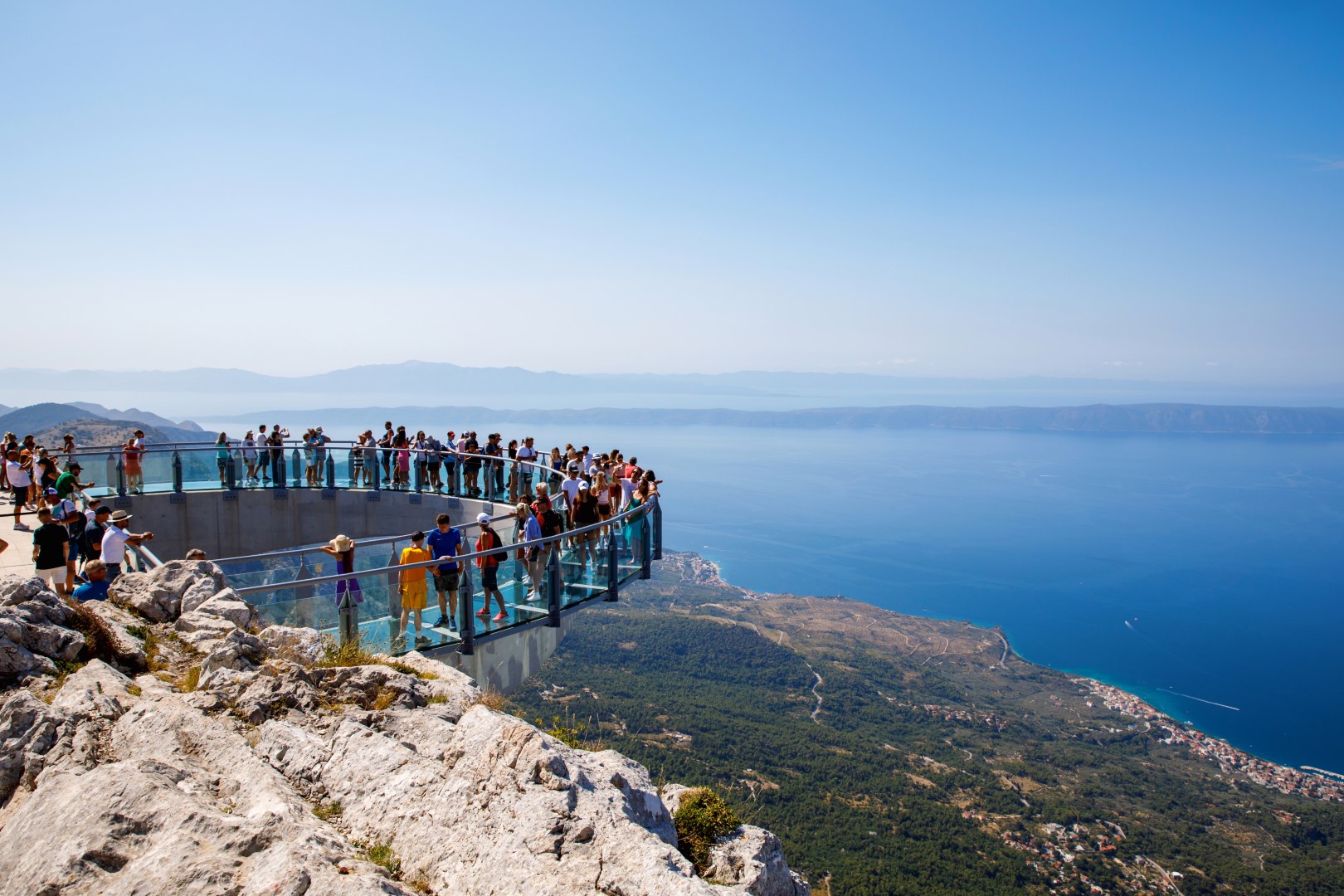The story of Split has been going on for 17 centuries, ever since the Roman emperor Diocletian decided to build a palace on that peninsula near the great Roman city of Salona, where he would spend the last years of his life in peace. In those 1700 years, the Palace slowly grew and became a city, which today beckons with its rich tradition, magnificent history, and the beauty of its natural and cultural heritage. Diocletian's Palace and the entire historic core of Split are on the UNESCO World Heritage List because of the extraordinary preservation of the Palace itself and because the Palace and its city continue to live a full life. All historical layers from ancient Rome, through the Middle Ages to today are visible and still live in this structure. By walking through the ancient city, it is possible to travel through time, observing top examples of ancient architecture such as the Peristyle, medieval Romanesque churches and Gothic palaces, Renaissance portals of noble houses, baroque facades, all the way to modern architecture wonderfully integrated into the rich heritage. It is also a city where you can enjoy top gastronomy and wines, find numerous cultural events such as film and theater festivals, exhibitions, top museums and concerts, a city that offers entertainment from numerous clubs and bars to street events to festivals such as Ultra Europe which every year. up to 100,000 young people from a hundred countries around the world visit. Split, with its dozens of Olympic and other medal winners, also has a sports tradition. When you get tired of the hustle and bustle of the city, there is Marjan, protect park of naturalethe, symbolic hill above the city, with its forest, jogging, hiking and biking trails, recreation grounds, but also ancient churches where the old people of Split sought spiritual peace. There are also beaches with clean sea, from the famous sandy Bačvice beach to secluded stone oases and pebble beaches around the whole of Marjan.
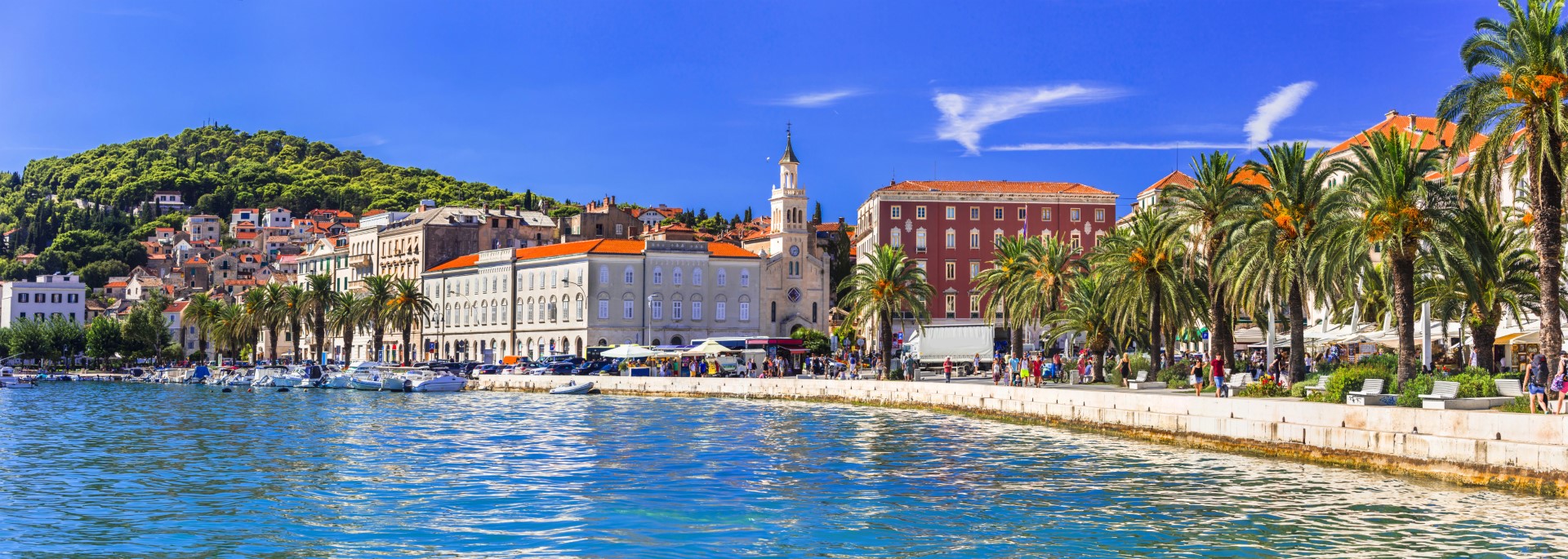

From ancient Salona and once the capital of the Roman province of Dalmatia, whose greatness, prosperity and opulence they bear witness the imposing walls with towers and gates, the forum with temples, the amphitheater ... through the turbulent times of Croatian rulers when Queen Jelena walked the island of Holy Mary and the coronation of King Zvonimir in Šuplja church in 1076. until today, to the Happy City along the Jadro and the youngest city in Croatia, Solin is truly a city monument, rich in cultural and natural heritage. You can enjoy a walk along the river Jadro - the Croatian Jordan, which will lead you to the Holy Mary island, the oldest Marian shrine in Croatia, and fill you with peace and tranquility.
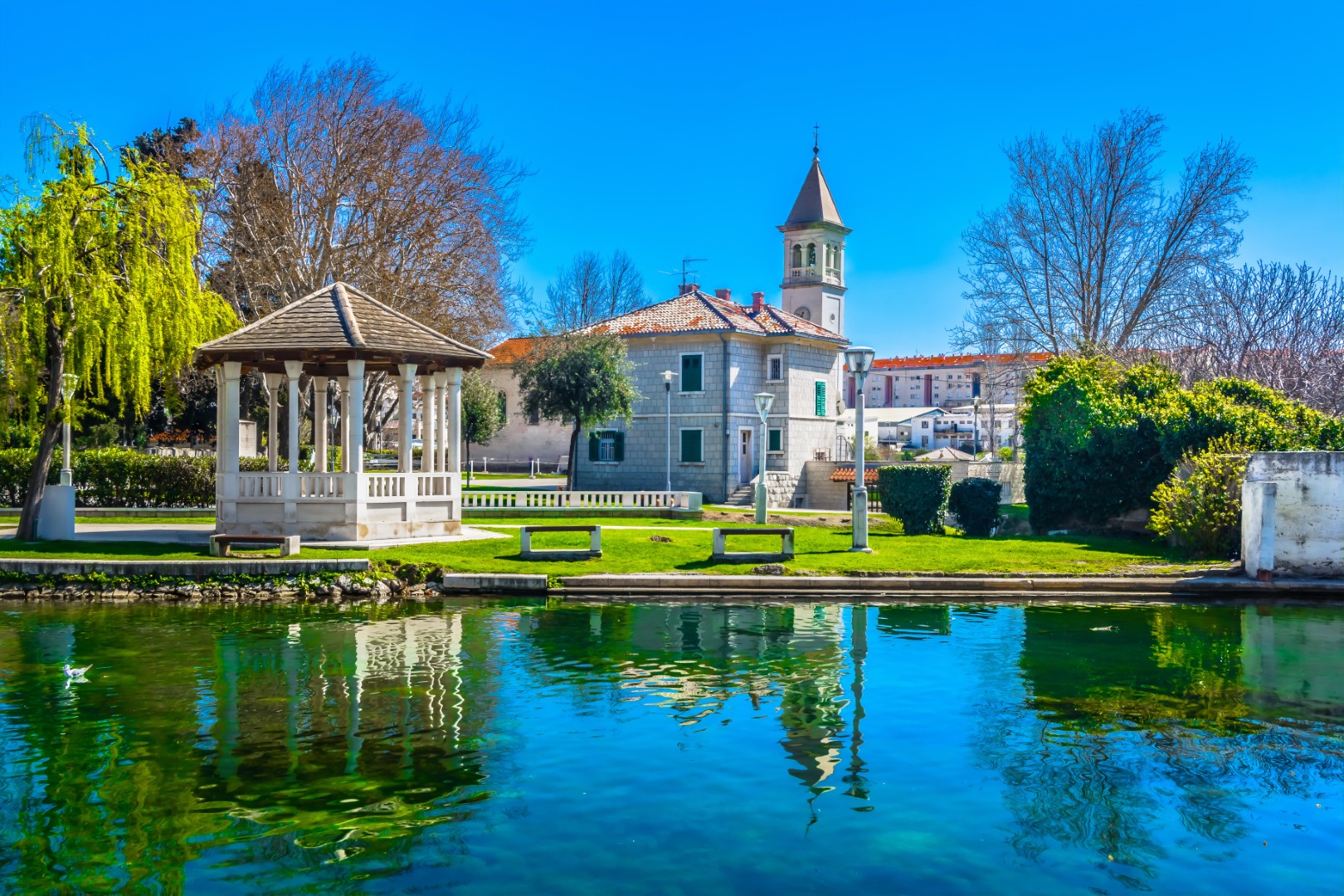
An amphitheater was built at the northwest end of the Salonitan city area, which was later surrounded by walls, and was directly integrated into the city's defense system. Its remains are relatively well preserved. The amphitheater was designed by Roman architects who built similar buildings elsewhere in the second half of the 2nd century after Christ. Today we see it, admittedly, preserved only in the lower layers of the massive walls, largely restored and reconstructed. In the immediate vicinity on the south side, an old cemetery was found with the remains of dead gladiators who fought in the arena. Their names, origin, homeland and martial specialty are known from the funeral inscriptions.

The Klis fortress is one of the most important fortresses in Croatia. Under the rule of Trpimirović, Klis had the status of the center of medieval Croatia. For centuries, the fortress guarded the approaches to Split and Dalmatia. Located in a strategic position, on a cliff in the middle of the gap that separates the Kozjak and Mosor mountains, and connects the interior of Croatia with Central Dalmatia. It is a place of indescribable heroism where often a handful of defenders, famous warriors named Uskoci, were exposed to the attacks of large conquering armies. It is the place where the invincible Mongolian army was defeated and tried to conquer the fortress during the pursuit of the defeated Hungarian king Bela IV. Today, the Klis fortress is a monument to the glorious past, a viewpoint from which you can see Split and its surroundings as if in the palm of your hand, a museum of Uskok heroism and a summer scene for cultural events. Many tourists discovered it through Game of Thrones, a popular series that was filmed in many locations in Dalmatia. In that series, the fortress of Klis played a role in the city of Meereen for a moment. The prominent position on which it was built and its exceptional historical significance make Klis Fortress an essential stop when visiting Split and this part of Dalmatia. Her brave crews have been a burden to generations of residents of these areas and beyond for all time.

Kaštela, coastal area by Kaštela Bay, at the foot of Opor (647 m) and Kozjak (780 m). It extends for a length of approximately 20 km, between Trogir in the west and Solin, or Split, in the east. The uniqueness of this town lies in the fact that it has developed around 7 places (Kaštel Sućurac, Kaštel Gomilica, Kaštel Kambelovac, Kaštel Lukšić, Kaštel Stari, Kaštel Novi, Kaštel Štafilić), or around 7 fortresses - castles, and each place has its own specificities that characterize this Mediterranean region. The museum of the city of Kaštela is located in the Vitturi castle in Lukšić, and the exhibition space is in the former bishop's summer house in Sućurac.

On the coast of central Dalmatia, about 30 kilometers west of Split, is the beautiful town of Trogir. The heart of this picturesque old town is a small island located between the mainland and the island of Čiovo. From interesting history to pebble beaches, this small town has it all. UNESCO included the Old Town of Trogir in the world heritage as one of the best preserved Romanesque-Gothic cities in Central Europe. Thanks to its geographical location, Trogir has been an ideal place to live since time immemorial. With a naturally protected harbor, numerous sources of drinking water, fertile soil in the hinterland of the city and stone from local quarries, Trogir has been continuously inhabited for more than 3,600 years. Since the time of the ancient Greeks, this inspiring Mediterranean city has attracted numerous masters who lived and created here. Various artists found inspiration here and left numerous traces of their work. Trogir is a city of masters, a city that slowly but convincingly draws us into an enchanted labyrinth of beauty, into narrow stone streets made of smooth yellow stone, the warm colors of the afternoon sun.
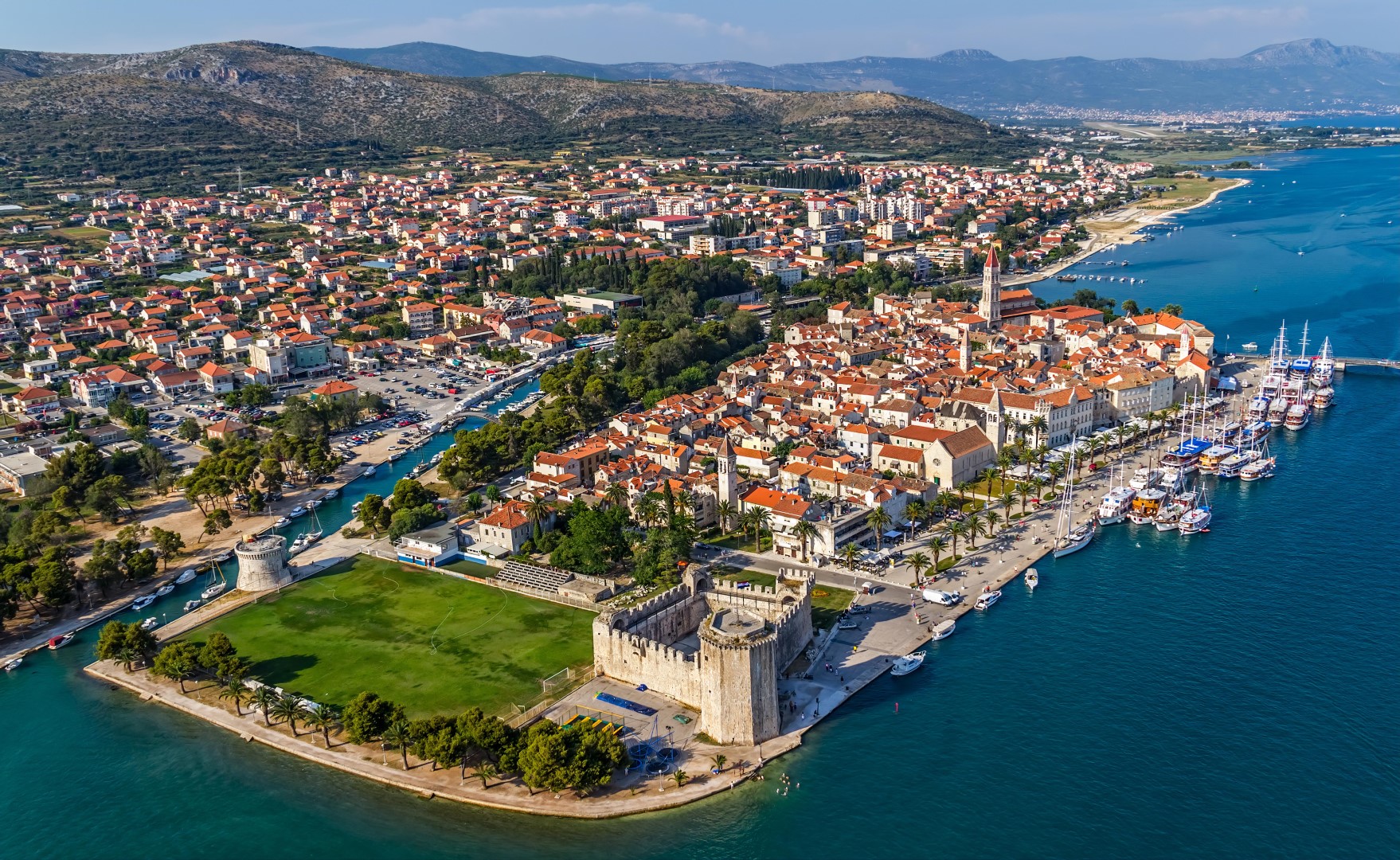
Omiš is a small central Dalmatian town and port located between Split and Makarska, at the mouth of the Cetina River. Throughout history, Omiš has been a notorious nest of pirates, and Omiš pirates are among the most dangerous in the entire Mediterranean. Evidence of the turbulent and proud history of Omiš is visible at every step of the Omiš Riviera. The ancient city of Omiš, the churches of the city of Omiš and the fortresses that surround it are silent stone reminders of the strength and power of the once infamous pirates of Omiš. Today, Omiš is the center of a tourist riviera of exceptional beauty located in the very heart of the Adriatic and the center of Croatian active tourism.
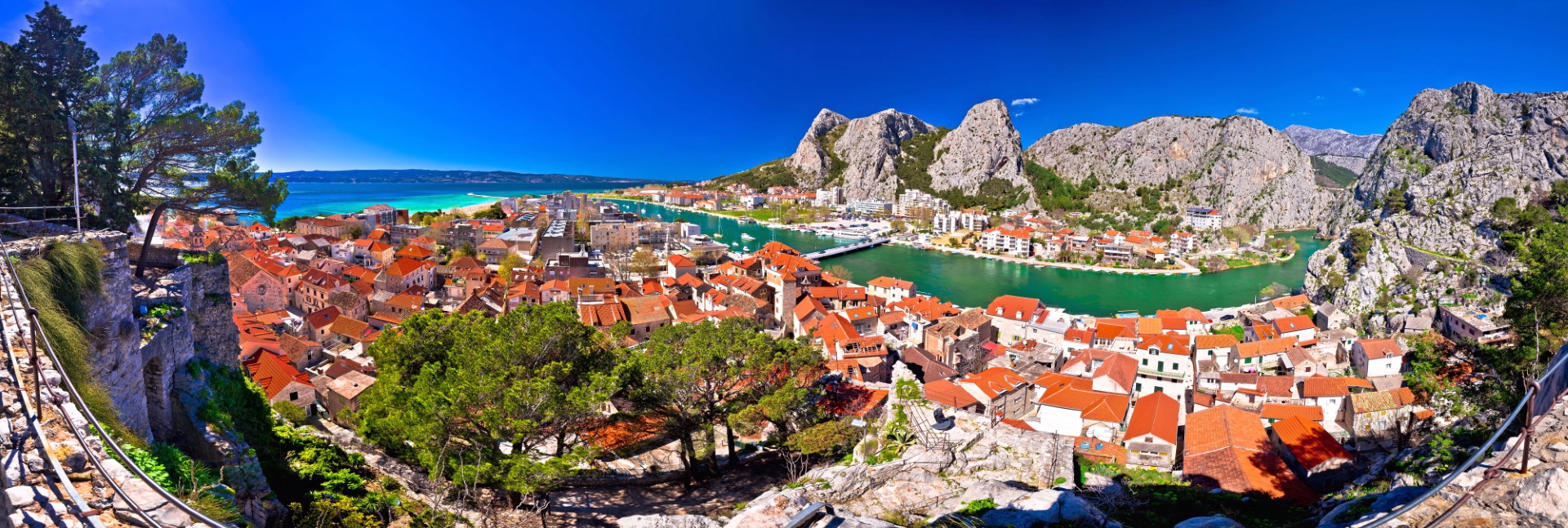
The river Cetina carved the mountain for thousands of years to create one of the most beautiful canyons in Europe. For tens of years, old pirates built forts with the most beautiful view in the world, stone by stone. The city of Omiš grew up in the place where the river Cetina flows into the sea. In order to reach its final destination, on its journey of more than 100 kilometers, Cetina had to bypass numerous obstacles, thus creating a specific winding course full of rapids, waterfalls and hidden beaches. The canyon of the river Cetina is one of the most beautiful in Croatia, and the part at the mouth itself, where the river breaks through to the sea in a narrow passage between two mountains, is particularly impressive. Rafting on the Cetina river, free climbing, diving, fishing, hiking, hiking in nature, windsurfing are just some of the activities that the unique Omiš Riviera offers its visitors. The adrenalin infused ZIPLINE polygon is located in the canyon of the River Cetina, 3 km from Omiš. It consists of 8 steel cables across which participants, sitting in a belt, descend down the canyon. The total length of the cables is 2,100 m, the longest of which is 700 m and is 150 m above ground level. To cross the entire polygon accompanied by two guides, a group of 8 persons requires two and a half hourssteel cables across which participants, sitting in a belt, descend down the canyon. RAFTING tour lasts for three hours taking you down the 10 km long rafting route all while enjoying beautiful nature, crystal clear waters and abundance of wildlife. Alternating rapids and waterfalls make the route even more exciting and interesting. You do not want to miss this adrenaline filled adventure.
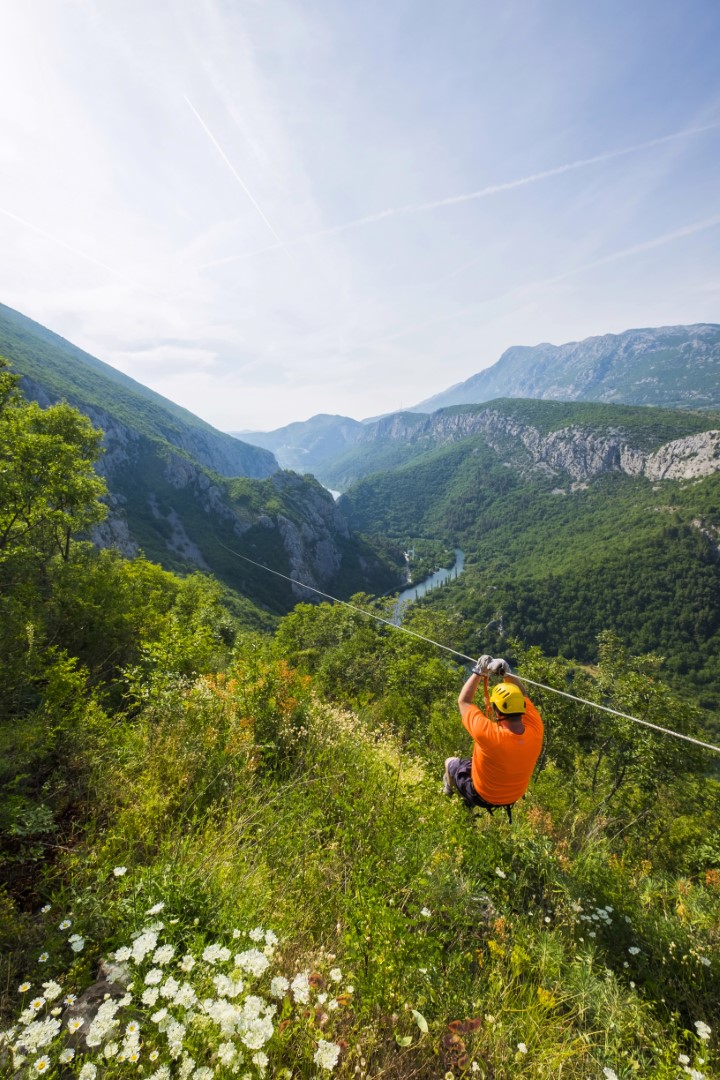
Makarska is a town on the Adriatic coastline of Croatia, about 60 km southeast of Split and 140 km northwest of Dubrovnik. Makarska is a city of preserved nature and inherited cultural heritage. If you are looking for a combination of preserved natural beauty, inherited cultural heritage and a rich tourist offer adapted to every guest, the city of Makarska is the right choice for you. Located under the mountain massif, surrounded by the crystal clear Adriatic Sea and two peninsulas, with friendly hosts, it will relax you from the busy everyday life. The city is noted for its palm-fringed promenade, where cafes, bars, restorans and boutiques overlook the harbor.
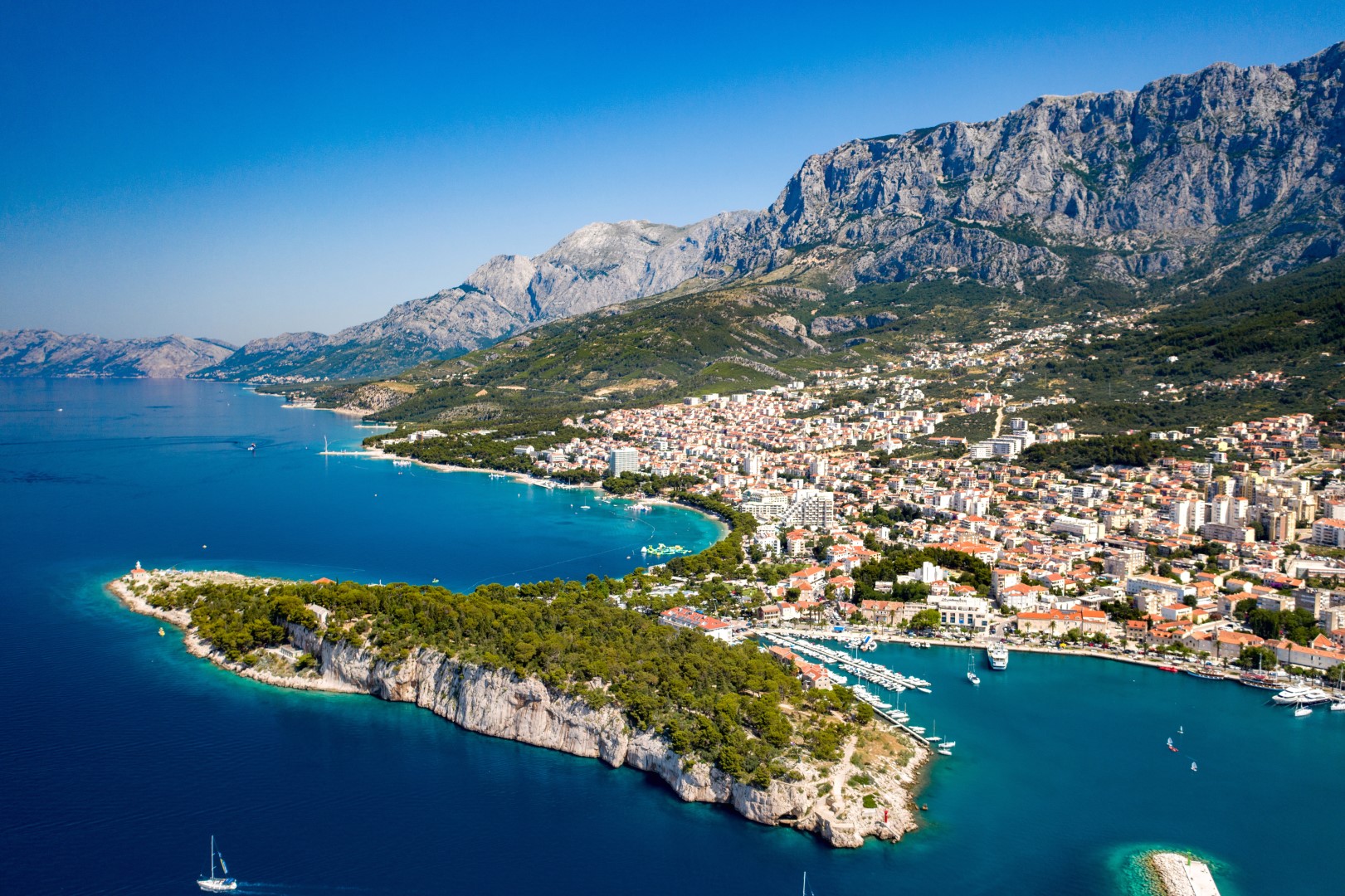
Skywalk Biokovo viewpoint is located in the area of Ravna vlaška, at a height of 1228 meters above the sea, on the 13th km of the Biokovo road and right next to the info center. As part of the observation deck, a geological column was built - a three-dimensional representation of the sections of rocks that formed the area of Biokovo from its inception until today, with a geological time table and a description of the age and types of rocks. The viewpoint can be reached via the Biokovo road that leads from the entrance reception of the Biokovo Nature Park, approximately 6 km east of Makarska, to the highest Biokovo peak, Sv. Jure at an altitude of 1,762 meters, which makes it the highest paved road in Croatia. There is a view of the sea and the islands from the Plato viewpoint. On windy, sunny days you can see Italy as well, and walking on transparent glass outside the edge of the cliff allows you to experience the Biokovo rocks from a bird's eye view.
